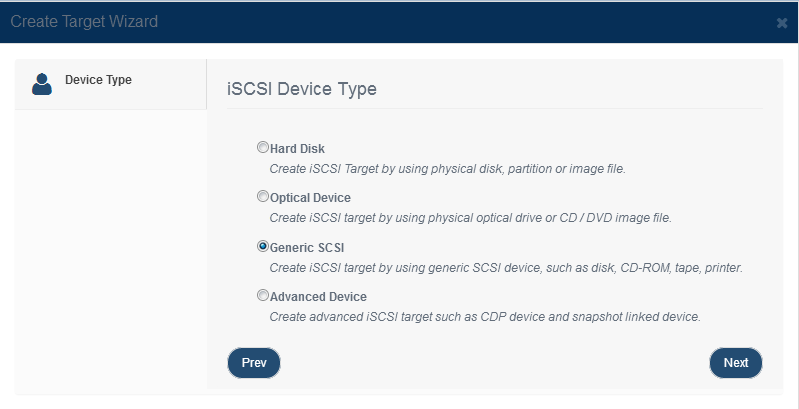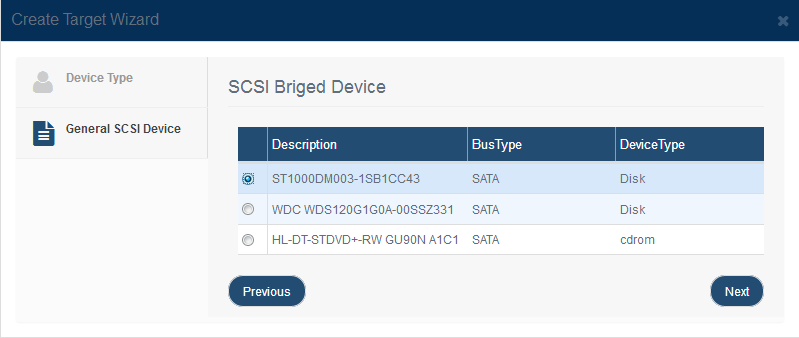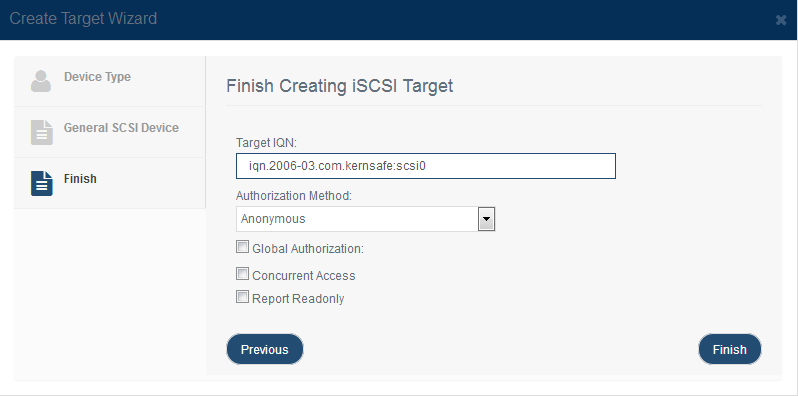

| SCSI Passthough Device | KernSafe Storage Center |
|
The generic SCSI device can be any SCSI device on the server machine, includes physical disk, physical optical device, USB storage and SCSI scanner an so on. KernSafe iSCSI SAN can export these devices to iSCSI devices so all the client machines in the network can share the device without physically moving the device to their own desk. All the commands and operations send to the generic SCSI device will be transferred to the KernSafe iSCSI SAN. The device will work just like it is attached to the user’s local environment. Creating A Generic SCSI Device Follow the steps below to create a SCSI device: Step 1. Click Add button on the top toolbar of the management system, then the Create iSCSI Target wizard popup up.
Choose Generic SCSI in the Device Type group. Press the Next button to continue. Step 2. Select the physical SCSI device
Select a device to be created as an iSCSI device. Press the Next button to continue. Step 3. Finish Creating iSCSI Target
Enter the Target Name. Select an authorization mode, if you don't know how to do it, you can see the topic Authorization Mechanism. Global Authorization: Indecate target will inherit authorization information (CHAP and IPFilters) from global, otherwise target will have its own authorization information. Concurrent Access: Indicate target allow concurrent read-write operations. Report Readonly: Indicate target will report as read only device if initiator don't have write access. Press the Finish button to complete iSCSI target creation. Note: If use Windows version iSCSI SAN, we recommend you to modify registry settings because some of SCSI devices have transfer size limit. The settings are as follows: Registry key: HKEY_LOCAL_MACHINE\SYSTEM\CurrentControlSet\Control\Class\{4D36E97B-E325-11CE-BFC1-08002BE10318}\0000\Parameters
The sub-key 0000 may be 0001, 0002 etc, please check the DriverDesc value (Should be Microsoft iSCSI Initiator). |
|
SUPPORT
- Forum
- Support Ticket
- [email protected]

- Voice Mail:
- +1 (518) 289-4888



